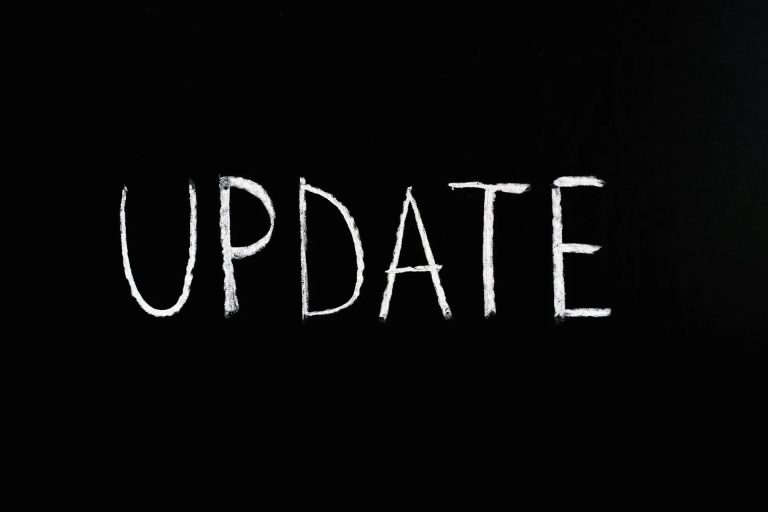Building a StoryBrand: Clarify Your Message So Customers Will Listen
Donald Miller’s book outlines a 7-part StoryBrand Framework that helps you communicate your business brand clearly. Successful business owners understand that the customer should be the hero of their story, not their brand.

The brain can digest a message easier if the message is clearly presented. When a potential customer visits your website, within the first 5 seconds, they should be able to figure out what you offer, how it will make their lives better, and what they need to do in order to buy it. The StoryBrand method focuses on telling a great story for your brand, which includes, A CHARACTER who wants something encounters a PROBLEM before they can get it. At the peak of their despair, a GUIDE steps into their lives, gives them a PLAN, and CALLS THEM TO ACTION. That action helps them avoid FAILURE and ends in a SUCCESS. Using the 7 elements, you’ll learn how to communicate a clear message that people will hear and respond to.
SB7 (7-part StoryBrand Framework):
1) A Character
2) Has a problem
3) Who meets a guide
4) Who gives them a plan
5) And calls them to action
6) That helps them avoid failure
7) And ends in success

The Character
Principle 1: The customer is the hero, not your brand.
Ask yourself: What do my customers want as it relates to my brand?
Is my brand known for one thing it offers?
When you define something your customer wants, you invite them into a story. Simplify and clarify your business message so customers can connect with you. The goal for branding should be for every customer knows exactly where you want to take them, or in other words, what your plan of action for them is.
Three things you need to get right at this stage of SB7:
1. Open Up a Story Gap
Any great storyteller opens a gap in their storyline between where the hero is right now and where they want to go. This will create a story gap in their mind, which will compel the prospect to wonder if your business is what can fill that gap for them.
2. Pare Down The Customer’s Ambition To a Single Focus
The human brain isn’t made to process multiple storylines. You will lose the customer’s attention if they have to think too hard. Summarize as simply as possible, and in a few words, what your business can offer them. Your business has to be known for a specific something and you must become known for delivering the message you portray.
3. Choose a Desire Relevant to Their Survival
The message you are sending to your prospects needs to be relevant to the customer’s sense of survival. Your business brand is meant to catch a wide range of potential clients. If your message is vague and confusing, the customer will not understand why they need your services in the first place. Defining something the customer wants and connecting it with the customer’s desire for survival opens an enticing story gap.
What kind of desires fit under the definition of survival ?
Miller mentions there are too many to count, but here are a few examples.
· Conserving financial resources
· Considering time
· Building social networks
· Gaining status
· Accumulating resources
· The innate desire to be generous
· The desire for meaning
Has a Problem
Principle 2: Customers buy solutions to internal problems.
Ask yourself: Have you clearly defined the problem your brand solves?
When you define a problem for your customers and offer a resolution, it will peak their interest in the story we tell. Like any great story, the hero must overcome all issues that arise. If your message is demonstrating how it can solve your customer’s problem, people are more likely to keep this information stored in their brain or written on a notepad. The only reason people are calling your business or going to your website is because they have a problem and need you to solve it.
Every story needs a great villain to be defeated.
1. The villain should be a root problem – frustration isn’t a villain – For instance, the high taxes that make us frustrated, are.
2. The villain should be relatable – your customers should immediately recognize it as something they hate.
3. The villain should be singular – too many villains and a story falls apart.
4. The villain should be real – don’t invent a villain that doesn’t exist.
There are three levels of conflict the hero’s face.
1. External Problem – A physical and tangible problem the hero must overcome.
2. Internal Problem- Inner frustration is what people are truly motivated to solve. A storybook hero may question if they have what it takes to solve this external problem.
3. Philosophical Problem – People wants to be involved in a story that’s larger than themselves.
And Mee ts a Guide
Principle 3: Customers aren’t looking for another hero; they are looking for a guide.
Ask yourself: Are you positioning yourself as the guide? Or like most brands, are you the hero?
Customers are not looking for a hero to save them; they are looking for a guide. Understanding this will change how you talk about your business. Donald tells us to position yourself as a guide and understand your role in the customer’s story. He warns that failure will follow if you do not position the customer as the hero and the brand as the guide.
You must express empathy and demonstrate authority to position your brand as a guide to your hero.
Express Empathy – Customer’s search for brands they have something in common with. When a customer is going through a predicament and we empathize with them, they feel understood which creates a new level of trust. The brain likes to conserve calories and when a customer realizes they have a lot in common, they fill in the unknown gaps with trust.
Demonstrate Authority- Nobody likes a know-it-all and nobody wants to be preached at, as Miller mentions. Don’t boast about how great you think you are or what you’re trying to do when a customer comes to you, instead lay out your services as weapons that will help them solve their problem. Listed are four easy ways to add authority to your business marketing: testimonials, statistics, awards, and logos.

Who Gives Them a Plan
Principle 4: Customers trust a guide who has a plan.
Ask yourself: Do you have a simple plan that makes it easy for your customers to do business with you?
You must provide your customers with a clear step-by-step plan to overcome the barrier blocking them to their success. There is a gap created for the customer between where they are and where they need to go if you ask for the sale at this point. You need to help your customers feel confident with purchasing your solution to their problem. Miller states there are two plans you should consider creating for your business; Process Plan and Agreement Plan . The success of any plan is to eliminate the confusion for the customer. Simplify their journey, so they are more likely to do business with you.
Process Plan- Tells your customer how to buy your product, how to use your product, or both. Miller suggests that there should be at least three steps to this process plan, but no more than six.
Agreement Plan- A list of agreements you make with an individual customer to help them overcome the fear of doing business with you. This can work to increase the value of a service you provide and it can clarify shared values between you and the customer.
And Calls Them to Action
Principle 5: Customers do not take action unless they are challenged to take action.
Ask yourself: Do you have a clear call to action?
The time has arrived to ask the customer for the sale or it may be where you ask for their information in exchange for something of value. This can allow us to nurture the customer until they convert. Pulling out their wallets can be scary because if they spend money, they might lose money or perhaps, if it doesn’t work, they may be embarrassed. Your customers won’t take action unless they are challenged to take action. It is your job to pursue your customers and take the initiative to get to know them and vice versa.
There are two different types of calls to action Miller mentions in his book.
The first is a direct call to action . Place a button on your website with wording such as “buy now”, “call today”, “register now”, or “schedule an appointment“. Then the customer will have the opportunity to take the next step and contact you at the touch of their fingers.
The second is a transitional call to action ¸ which are steps you ask your customer to complete before purchasing your services or products. As the guide in your customer’s story, you must challenge them to buy something from you and this message must be very, very clear. For example having prospects watch a webinar, create a video or PDF testimonial, or take a free trial.
A good transitional call to action can do three powerful things for your brand:
·They stake a claim to your territory. If you want to be a leader in a certain territory, stake a claim before your competition beats you to it.
·They create reciprocity. The more generous you are in giving away free information, the more likely your customers will be to purchase from you in the future.
·They position your brand as the guide.

That Helps Them Avoid Failure
Principle 6: Every human being is trying to avoid a tragic ending.
Ask yourself: Have you communicated what’s at stake to your customers?
What are negative consequences of not doing business with you?
Your customer is trying to avoid a tragic ending. They need to know what is at stake. What are they losing out on if they do not work with you? You must clearly communicate the negative consequences of what will happen to your customers if they do not buy your product or service. This part of the SB7 process asks you to identify the few things your customer is trying to avoid. You’ll only need a few things to warn your customers about. If you have too many your customers may resist you, too little, and they won’t know why what you sell is valuable.
And Ends in Success
Principle 7: Never assume people understand
how your brand can change their lives. Tell them .
It is important to show customers how your products can positively affect their lives. Your website images should help customers envision life with their problems solved. People naturally steer toward a happy ending if you show them one. If people cannot imagine what it is like doing business with you, they will not do business with you. You have to tell them! When you don’t know how to exactly communicate to the customer what you do, you confuse them and they will not buy your product with doubts. Ultimately, when you resolve your customer’s internal, external, philosophical conflicts, you’ve created a resolution to satisfy their story.

Conclusion
The intention of me reading this book was to improve my marketing message to help serve more customers. When you learn to communicate clearly, you will stop confusing your business message and finally talk about your services or products from the perspective of the customer. Salespeople empathize with customer’s problems and you must position your products as the resolution to those problems. Once your team fully understands your business brand, they will be unified around your common mission, and you will start to see your company grow again.
Add Donald Miller’s book to your reading list and take the steps to build your own BrandScript, which will become the template for all communication and marketing for your business. Click on the following link to access the S toryBrand Book Store to purchase your copy!





